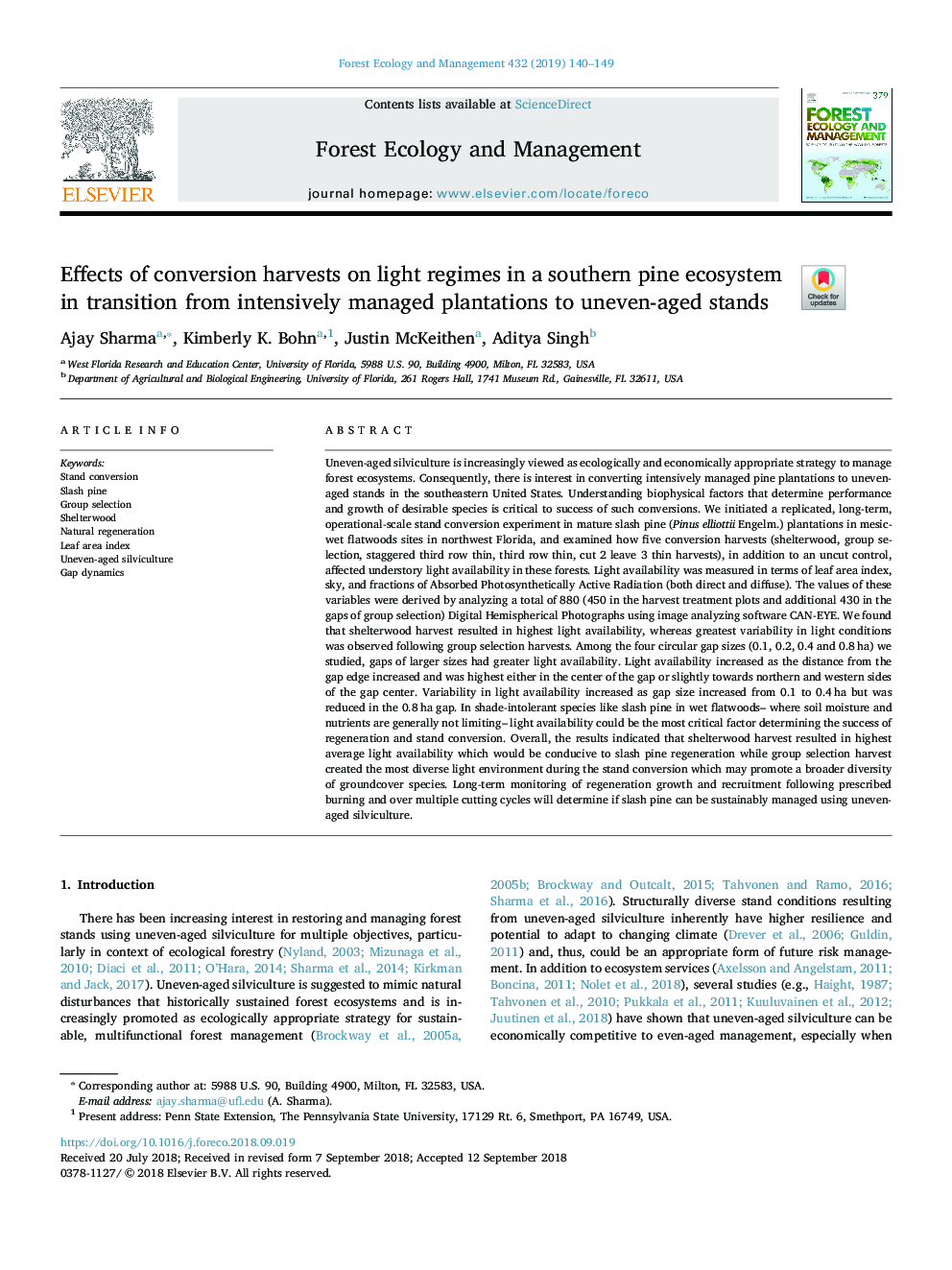| کد مقاله | کد نشریه | سال انتشار | مقاله انگلیسی | نسخه تمام متن |
|---|---|---|---|---|
| 10150049 | 1662523 | 2019 | 10 صفحه PDF | دانلود رایگان |
عنوان انگلیسی مقاله ISI
Effects of conversion harvests on light regimes in a southern pine ecosystem in transition from intensively managed plantations to uneven-aged stands
ترجمه فارسی عنوان
اثر برداشت های تبدیل بر رژیم های نور در یک اکوسیستم کاج جنوبی در حال گذار از گیاهان کنترل شدید به غرفه های ناهموار
دانلود مقاله + سفارش ترجمه
دانلود مقاله ISI انگلیسی
رایگان برای ایرانیان
کلمات کلیدی
موضوعات مرتبط
علوم زیستی و بیوفناوری
علوم کشاورزی و بیولوژیک
بوم شناسی، تکامل، رفتار و سامانه شناسی
چکیده انگلیسی
Uneven-aged silviculture is increasingly viewed as ecologically and economically appropriate strategy to manage forest ecosystems. Consequently, there is interest in converting intensively managed pine plantations to uneven-aged stands in the southeastern United States. Understanding biophysical factors that determine performance and growth of desirable species is critical to success of such conversions. We initiated a replicated, long-term, operational-scale stand conversion experiment in mature slash pine (Pinus elliottii Engelm.) plantations in mesic-wet flatwoods sites in northwest Florida, and examined how five conversion harvests (shelterwood, group selection, staggered third row thin, third row thin, cut 2 leave 3 thin harvests), in addition to an uncut control, affected understory light availability in these forests. Light availability was measured in terms of leaf area index, sky, and fractions of Absorbed Photosynthetically Active Radiation (both direct and diffuse). The values of these variables were derived by analyzing a total of 880 (450 in the harvest treatment plots and additional 430 in the gaps of group selection) Digital Hemispherical Photographs using image analyzing software CAN-EYE. We found that shelterwood harvest resulted in highest light availability, whereas greatest variability in light conditions was observed following group selection harvests. Among the four circular gap sizes (0.1, 0.2, 0.4 and 0.8â¯ha) we studied, gaps of larger sizes had greater light availability. Light availability increased as the distance from the gap edge increased and was highest either in the center of the gap or slightly towards northern and western sides of the gap center. Variability in light availability increased as gap size increased from 0.1 to 0.4â¯ha but was reduced in the 0.8â¯ha gap. In shade-intolerant species like slash pine in wet flatwoods-- where soil moisture and nutrients are generally not limiting-- light availability could be the most critical factor determining the success of regeneration and stand conversion. Overall, the results indicated that shelterwood harvest resulted in highest average light availability which would be conducive to slash pine regeneration while group selection harvest created the most diverse light environment during the stand conversion which may promote a broader diversity of groundcover species. Long-term monitoring of regeneration growth and recruitment following prescribed burning and over multiple cutting cycles will determine if slash pine can be sustainably managed using uneven-aged silviculture.
ناشر
Database: Elsevier - ScienceDirect (ساینس دایرکت)
Journal: Forest Ecology and Management - Volume 432, 15 January 2019, Pages 140-149
Journal: Forest Ecology and Management - Volume 432, 15 January 2019, Pages 140-149
نویسندگان
Ajay Sharma, Kimberly K. Bohn, Justin McKeithen, Aditya Singh,
